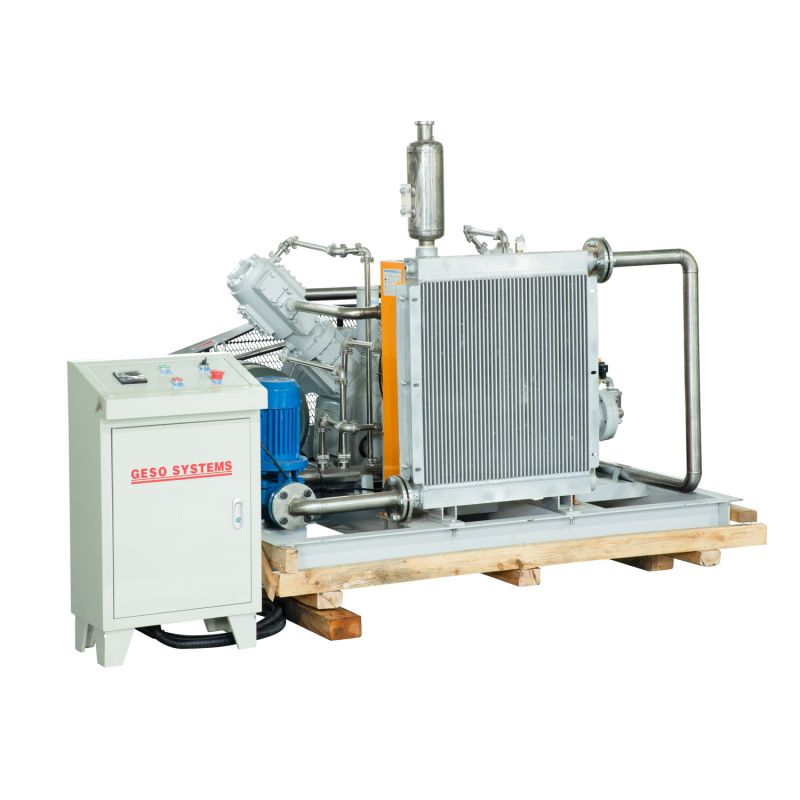What is an Air Compressor and How Does It Work?
2024-12-17
If you've ever been to an auto shop, a construction site, or even used a power tool at home, you've likely encountered an air compressor. But what exactly is an air compressor, and how does it work? Whether you're using it to inflate a tire, power a pneumatic tool, or run industrial equipment, understanding the basics of air compressors can help you make the most of this versatile machine. Let’s take a closer look.
What is an Air Compressor?
An air compressor is a device that converts power (usually from an electric motor, diesel engine, or gasoline engine) into potential energy stored in compressed air. This compressed air can then be used to perform a wide variety of tasks, ranging from inflating tires and powering air tools to operating machinery in manufacturing processes. The primary function of an air compressor is to take in air at atmospheric pressure, compress it, and store it at a higher pressure for later use.
How Does an Air Compressor Work?
The basic working principle of an air compressor is fairly simple. Here's a breakdown of the process:
1. Air Intake: The compressor draws in ambient air through an intake valve, usually with the help of a filter to remove any dust or debris.
2. Compression: The intake air is then compressed by either a piston (in reciprocating compressors) or a rotary element (in screw or rotary compressors). This process reduces the volume of the air, which increases its pressure.
3. Storage: The compressed air is stored in a tank, which helps to maintain a steady supply of pressurized air. Some air compressors continuously run and fill the tank, while others cycle on and off depending on the demand.
4. Release: When you need to use the air, the compressor releases it through a hose and valve system to the tool or device you are operating.
5. Regulation: Many air compressors have pressure regulators to control the output pressure. This ensures that the air pressure is appropriate for the specific task at hand, whether it’s powering a pneumatic tool or inflating a tire.
Types of Air Compressors
Air compressors come in several types, each designed for different applications:
1. Reciprocating (Piston) Air Compressors: These are the most common type and work by using pistons to compress the air. They are often used for smaller tasks and are popular in home garages, workshops, and small industrial settings.
2. Rotary Screw Compressors: These compressors use two interlocking helical screws to compress the air. They are more efficient than piston compressors and are typically used in larger commercial and industrial applications.
3. Centrifugal Compressors: These are high-capacity compressors that use high-speed rotating impellers to accelerate air and convert it into pressure. They are generally used in large-scale industrial operations.
4. Diaphragm Compressors: These compressors use a diaphragm to compress air. They are ideal for situations where a high level of air purity is required, such as in the medical or laboratory field.
Applications of Air Compressors
Air compressors are incredibly versatile and are used in a wide range of applications:
- Automotive: Compressors are essential for powering pneumatic tools like impact wrenches, tire changers, and spray guns. They are also used for inflating tires and cleaning parts.
- Construction: On construction sites, air compressors are used to power heavy machinery such as jackhammers, drills, and sandblasters.
- Manufacturing: In factories, compressed air is used for everything from operating tools to controlling machinery and even moving products along an assembly line.
- HVAC: Air compressors are used in HVAC systems to control refrigeration cycles and help in the cooling and heating processes.
- Home Use: On a smaller scale, air compressors are used in home workshops for tasks like inflating air mattresses, powering small tools, and even cleaning hard-to-reach areas with compressed air.
Benefits of Using an Air Compressor
- Power Efficiency: Air compressors are often more energy-efficient than electric motors for certain tasks, especially when it comes to powering heavy-duty tools or machinery.
- Versatility: As mentioned earlier, air compressors can power a wide range of tools and equipment, making them useful in many different industries.
- Cost-Effective: Once you purchase an air compressor, the cost of running it is relatively low, especially when compared to fuel-powered equipment.
- Portability: Many small air compressors are compact and portable, making them easy to transport from one job site to another.
Maintenance and Safety Tips for Air Compressors
To ensure that your air compressor operates efficiently and safely, regular maintenance is essential:
- Regularly check the oil (for oil-lubricated compressors) to keep the system running smoothly.
- Inspect air filters to ensure that air is flowing freely and contaminants are not clogging the intake.
- Drain the tank regularly to remove accumulated moisture, which can cause rust or affect the performance of the compressor.
- Monitor air pressure and ensure that the compressor is not overloaded.
Safety is also a critical concern. Always follow the manufacturer’s instructions for proper usage, wear necessary protective gear (such as ear protection, safety glasses, etc.), and ensure the compressor is properly ventilated to avoid overheating.
Conclusion
An air compressor is a powerful and versatile tool that can make light work of heavy tasks. Whether you're inflating tires, powering tools, or driving machinery, the ability to harness compressed air makes many jobs easier and more efficient. By understanding how it works and the various types available, you can choose the right air compressor for your needs and ensure that it performs well for years to come.



